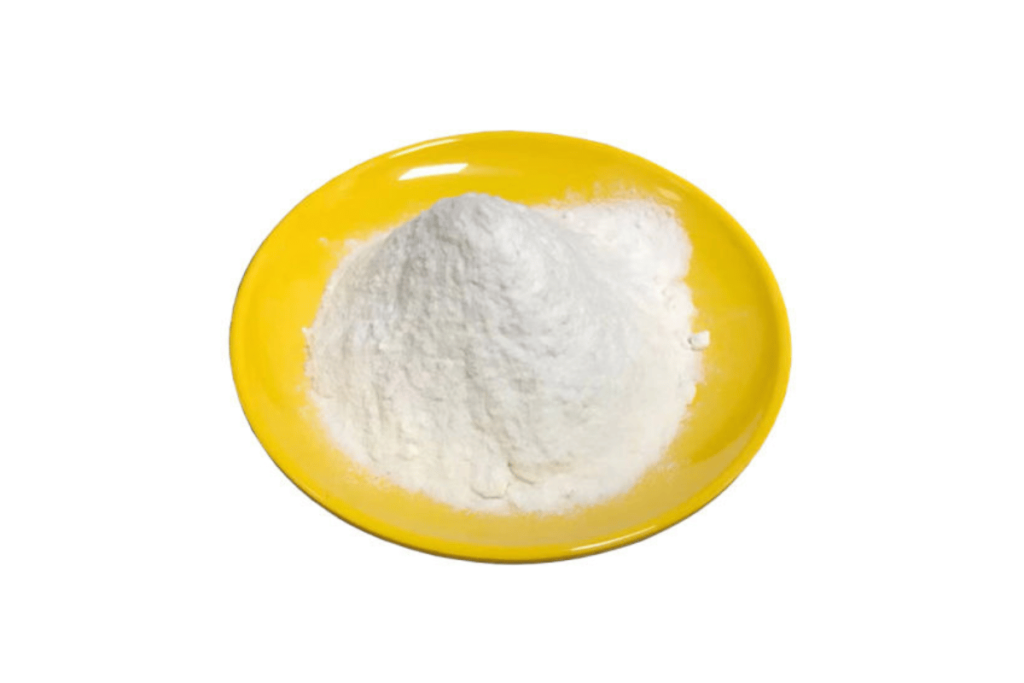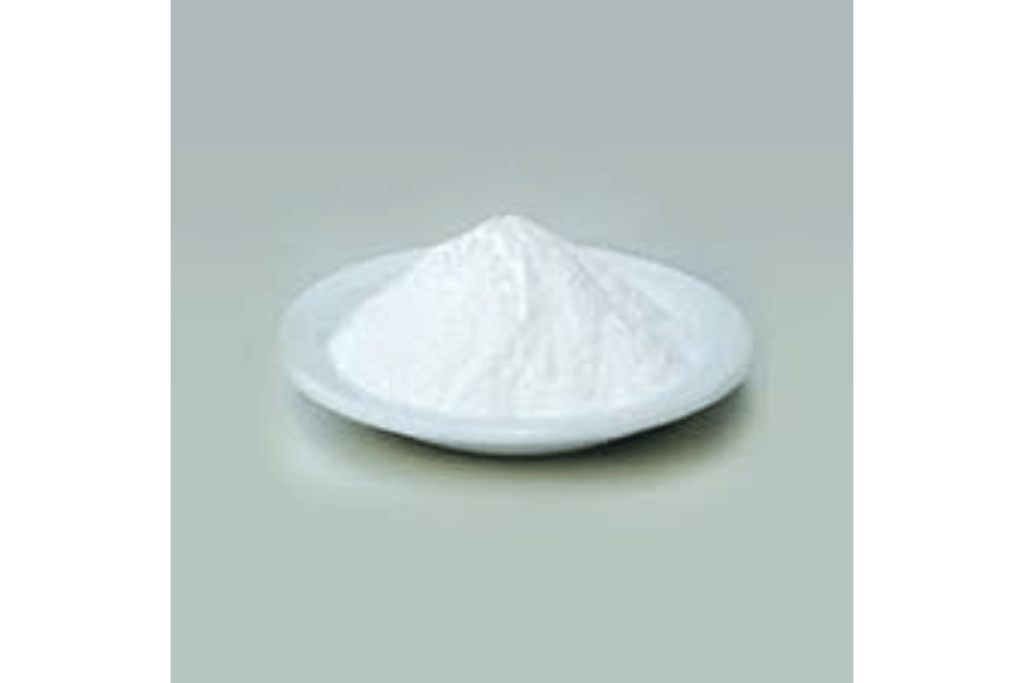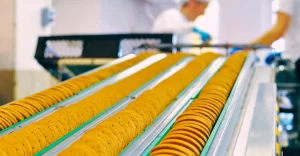Emulsifier CMC (Carboxymethyl Cellulose), a key ingredient in the food industry, has revolutionized the way we approach food texture and stability, particularly in baked goods. CMC, including its forms like Sodium carboxymethyl cellulose and carboxymethylcellulose sodium, stands out for its versatility and efficacy as an emulsifier and stabilizer.
Derived from cellulose, a natural polymer found in the cell walls of plants, Carboxymethyl cellulose is chemically modified to enhance its water solubility and functionality. This modification introduces carboxymethyl groups into the cellulose structure, transforming it into a highly effective emulsifying agent.
The historical development of Emulsifier Carboxymethyl Cellulose in the food industry dates back several decades. Initially, its role was confined to simple applications like thickening agents. However, with advancements in food technology, its unique properties were harnessed more effectively, leading to widespread use in various food products, including baked goods.
In the realm of baking, Emulsifier Carboxymethyl Cellulose has become a go-to ingredient for enhancing texture and stability. It addresses common challenges in baking, such as maintaining moisture, improving shelf life, and ensuring consistent texture. Its ability to interact with other ingredients makes it a valuable tool for food technologists and bakers.
The importance of understanding what foods contain polysorbate 80 and carboxymethylcellulose is crucial, as both are commonly used in the food industry for different purposes. While Polysorbate 80 is primarily used as a surfactant, CMC serves as a thickener and stabilizer, each contributing uniquely to the quality of food products.
In conclusion, Emulsifier Carboxymethyl Cellulose is not just an additive but a transformative component in baking. It exemplifies how scientific innovation can enhance the culinary experience, ensuring that baked goods not only taste good but also have the desired texture and longevity. The ongoing development and application of Carboxymethyl Cellulose in the food industry highlight its indispensable role in modern food production and technology.

The Role of Emulsifier CMC in Baking
Emulsifier CMC (Carboxymethyl Cellulose), including its variants like Sodium carboxymethyl cellulose and carboxymethylcellulose sodium, plays a pivotal role in the baking industry. Its impact on enhancing texture and stability in baked goods is significant, setting it apart from other emulsifiers.
Explaining How Emulsifier Carboxymethyl Cellulose Enhances Texture and Stability in Baked Goods
In baking, texture and stability are crucial for the quality and appeal of the final product. Emulsifier CMC excels in improving these aspects due to its unique chemical properties. As a hydrocolloid, it has the ability to absorb and retain water, which is essential in creating moist and soft textures in baked goods like bread, cakes, and pastries.
Additionally, CMC contributes to the stability of doughs and batters. It prevents the separation of ingredients, ensuring a uniform distribution throughout the baking process. This uniformity is key to achieving consistent texture and preventing issues like crumbling or dryness in the final product.
Comparison with Other Emulsifiers Used in Baking
When compared to other emulsifiers used in baking, such as lecithin or glycerol monostearate, Emulsifier Carboxymethyl Cellulose stands out for its versatility and efficiency. Unlike some emulsifiers that may impart a specific flavor or have limitations in certain applications, CMC is neutral in taste and highly adaptable to various baking recipes.
Another advantage of CMC over other emulsifiers is its effectiveness in small quantities. This not only makes it cost-effective but also reduces the risk of altering the fundamental characteristics of the baked product.
The role of Emulsifier Carboxymethyl Cellulose in baking extends beyond just improving texture and stability. It also contributes to the overall quality of the baked goods, enhancing their shelf-life and making them more appealing to consumers. This is particularly important in commercial baking, where consistency and longevity of products are key factors for success.
In conclusion, the role of Emulsifier Carboxymethyl Cellulose in baking is multifaceted. Its ability to enhance texture, ensure stability, and improve the overall quality of baked goods makes it a valuable ingredient in the baking industry, distinguishing it from other emulsifiers and highlighting its importance in the production of high-quality baked products.
Chemical Properties of Emulsifier Carboxymethyl Cellulose
Emulsifier CMC (Carboxymethyl Cellulose), including its forms such as Sodium carboxymethyl cellulose and carboxymethylcellulose sodium, possesses unique chemical properties that make it an invaluable ingredient in baking.
Detailed Discussion on the Chemical Composition and Properties of Carboxymethyl Cellulose
Carboxymethyl Cellulose is a cellulose derivative where the hydroxyl groups of the glucopyranose monomers in the cellulose chain are partially substituted with carboxymethyl groups. This chemical modification enhances the solubility of CMC in water, a key property that distinguishes it from native cellulose, which is water-insoluble.
The degree of substitution (DS) of the carboxymethyl groups largely determines the solubility and viscosity of CMC. A higher DS generally increases solubility and viscosity. This customizable property allows for the tailoring of CMC to specific needs in baking applications, where varying degrees of thickness and stabilization are required.
CMC’s molecular weight also plays a crucial role in its functionality. Lower molecular weight CMC tends to be less viscous and more soluble, suitable for applications requiring finer textures. Conversely, higher molecular weight CMC provides greater thickening and stabilizing effects, ideal for more robust baked products.
How These Properties Make Carboxymethyl Cellulose Effective in Baking
The water solubility of CMC facilitates its even distribution throughout doughs and batters, ensuring consistency in baking. Its ability to retain moisture contributes significantly to the softness and shelf-life of baked goods. By binding water, Carboxymethyl Cellulose helps maintain the freshness of baked products, preventing them from drying out quickly.
Additionally, the thickening and stabilizing properties of CMC are crucial in achieving the desired texture in baked goods. It improves the structure of doughs and batters, leading to better volume and texture in the final product. This is especially important in gluten-free baking, where Carboxymethyl Cellulose can compensate for the lack of gluten and provide the necessary structure and moisture retention.
In conclusion, the chemical composition and properties of Emulsifier Carboxymethyl Cellulose make it an effective and versatile ingredient in baking. Its ability to enhance texture, improve moisture retention, and ensure product consistency highlights its crucial role in the production of high-quality baked goods.
Application of Emulsifier Carboxymethyl Cellulose in Different Baked Products
Emulsifier CMC (Carboxymethyl Cellulose), including its forms like Sodium carboxymethyl cellulose and carboxymethylcellulose sodium, is widely used in a variety of baked products, from bread to pastries. Its versatile properties make it an essential ingredient in enhancing the quality and consistency of these products.
Use in Bread, Cakes, Pastries, and Other Baked Goods
In bread-making, CMC’s water retention capabilities improve dough elasticity and volume. It helps in achieving a soft, uniform crumb structure and extends the shelf life by reducing staling. For gluten-free bread, CMC is particularly valuable as it compensates for the lack of gluten structure, providing the necessary texture and firmness.
For cakes and pastries, CMC plays a crucial role in maintaining moisture and improving texture. It ensures that cakes remain soft and moist for a longer period, enhancing the overall sensory experience. In frostings and icings, CMC acts as a stabilizer, preventing them from separating and helping maintain their spreadable consistency.
CMC is also used in cookie production, where it helps control spread during baking, resulting in uniform and well-shaped cookies. In pie fillings, it serves as a thickener, ensuring that the filling sets properly and doesn’t leak out during baking or when the pie is cut.
Case Studies or Examples of Successful Carboxymethyl Cellulose Integration
One notable case study involves the use of CMC in commercial bread production. By incorporating CMC, a bakery was able to produce bread with improved softness and a longer shelf life, leading to increased customer satisfaction and reduced product returns.
Another example is the use of CMC in frozen dough applications. CMC helps maintain the quality and texture of the dough during freezing and thawing cycles, ensuring that the final baked product retains its desired characteristics.
In conclusion, the application of Emulsifier CMC in various baked products demonstrates its versatility and effectiveness in improving quality. Whether it’s enhancing the texture of gluten-free bread or maintaining the moisture of cakes, CMC serves as a key ingredient in meeting the diverse needs of the baking industry.
Benefits of Using Emulsifier Carboxymethyl Cellulose in Bakery Products
The incorporation of Emulsifier CMC (Carboxymethyl Cellulose), including its variants like Sodium carboxymethyl cellulose and carboxymethylcellulose sodium, in bakery products, brings a host of benefits. These advantages not only enhance the quality of the baked goods but also contribute to the health and nutrition of consumers.
Improvements in Texture, Shelf-Life, and Moisture Retention
One of the primary benefits of using CMC in bakery products is the significant improvement in texture. CMC helps in achieving a desirable softness and consistency in bread, cakes, and pastries. It provides a uniform crumb structure in bread and a tender crumb in cakes, enhancing the overall eating experience.
The shelf-life of bakery products is also extended with the use of CMC. By retaining moisture effectively, CMC reduces the rate of staling in bread and other baked goods. This longer shelf-life is beneficial for both consumers and retailers, as it reduces food waste and ensures that products remain fresh for a longer period.
Moisture retention is another crucial benefit. CMC’s ability to hold water ensures that bakery products do not dry out quickly, maintaining their freshness and palatability. This property is particularly valuable in products like cakes and pastries, where maintaining moisture is key to their texture and flavor.
Health and Nutritional Benefits for Consumers
CMC is a non-digestible dietary fiber, which can have positive effects on consumer health. Its inclusion in bakery products can aid in digestive health by adding to the dietary fiber content of these foods. This is especially important in today’s health-conscious market, where consumers are looking for products that contribute to their overall well-being.
Additionally, CMC’s role in reducing the fat content in baked goods can be highlighted. By stabilizing water and oil emulsions, CMC allows for the reduction of fat in recipes without compromising the texture and mouthfeel of the product. This reduction in fat content is beneficial for consumers mindful of their fat intake.
In conclusion, the benefits of using Emulsifier CMC in bakery products are manifold. From enhancing texture and extending shelf-life to contributing to the health and nutrition of consumers, CMC proves to be an invaluable ingredient in the bakery industry. Its multifunctional properties not only improve the quality of baked goods but also align with the evolving dietary preferences and health requirements of consumers.

Technical Aspects and Formulation Techniques
The use of Emulsifier CMC (Carboxymethyl Cellulose), including its forms like Sodium carboxymethyl cellulose and carboxymethylcellulose sodium, in bakery products involves understanding its technical aspects and mastering specific formulation techniques. These are crucial for achieving optimal results and harnessing the full potential of CMC in baking.
Detailed Guidelines on Incorporating Carboxymethyl Cellulose into Baking Recipes
Integrating CMC into baking recipes requires precise measurement and timing. The amount of CMC used can vary depending on the desired texture and stability of the product. Generally, it is used in small quantities, typically ranging from 0.5% to 2% of the flour weight. Exceeding this range can result in overly thick or gummy textures.
When adding CMC to a recipe, it should be dispersed evenly to avoid lump formation. This can be achieved by mixing CMC with dry ingredients, like flour or sugar, before combining it with wet ingredients. In liquid-based recipes, pre-dispersing CMC in a small amount of water or another liquid can ensure even distribution.
For gluten-free baking, CMC’s role becomes even more crucial. It compensates for the lack of gluten by providing the necessary structure and moisture retention. In such cases, the quantity of CMC might need to be adjusted upwards to achieve the desired texture.
Adjusting Formulations for Optimal Results
Bakers and food technologists often need to experiment with CMC concentrations to find the perfect balance for their specific product. Factors like the type of flour, other ingredients in the recipe, and the desired shelf-life of the final product all influence the optimal amount of CMC to be used.
It’s also important to consider the interactions of CMC with other ingredients. For instance, acidic ingredients can affect the viscosity of CMC, and adjustments may be needed to maintain the desired texture. Similarly, the presence of sugars and fats can influence how CMC behaves in the dough or batter.
Temperature and baking time can also affect the performance of CMC. Higher temperatures can increase the rate of CMC hydration, affecting the texture of the baked product. Understanding these nuances is essential for successful baking with CMC.
In conclusion, the technical aspects and formulation techniques involved in using Emulsifier CMC in baking are complex but manageable with the right knowledge and skills. Mastering these techniques allows bakers to leverage CMC’s benefits fully, resulting in superior quality baked goods that meet consumer expectations.
Challenges and Solutions When Using Emulsifier Carboxymethyl Cellulose
Utilizing Emulsifier CMC (Carboxymethyl Cellulose), including forms like Sodium carboxymethyl cellulose and carboxymethylcellulose sodium, in baking processes presents certain challenges. However, understanding these challenges and implementing effective solutions can significantly enhance the quality and consistency of baked goods.
Common Challenges Faced by Bakers and Food Technologists
One of the primary challenges in using Emulsifier CMC is achieving the correct consistency and texture in the final product. An incorrect amount of CMC can lead to either too firm or too soft baked goods. This precision in measurement is crucial, as even slight deviations can significantly impact the product’s quality.
Another challenge is the interaction of CMC with other ingredients in a recipe. Ingredients like acids, sugars, and fats can alter the functionality of CMC, affecting the overall texture and stability of the baked product. Additionally, variations in temperature and humidity during the baking process can influence how CMC behaves, making consistent results harder to achieve.
Solutions and Best Practices to Overcome These Challenges
To address these challenges, the following solutions and best practices are recommended:
- Precise Measurement: Using accurate scales and measuring tools is essential to ensure the correct amount of CMC is added to the recipe. This precision helps in achieving the desired texture and consistency in the final product.
- Understanding Ingredient Interactions: Bakers and food technologists should have a good understanding of how CMC interacts with other ingredients. Conducting small-scale trials can help determine the optimal combination and ratios of ingredients for the desired outcome.
- Controlled Environment: Maintaining a controlled baking environment, with consistent temperature and humidity, can help mitigate the effects of external factors on the behavior of CMC in baking processes.
- Adjusting Recipes: Flexibility in recipe formulation is key. Adjusting the amount of CMC based on the type of product and desired characteristics can lead to better outcomes. It’s also crucial to consider the type of CMC used, as different grades can have varying effects on texture and stability.
- Continual Learning and Adaptation: Staying informed about the latest developments in CMC applications and baking technologies can help bakers and food technologists adapt their practices to achieve the best results.
In conclusion, while using Emulsifier CMC in baking presents certain challenges, these can be effectively managed with careful planning, precise formulation, and a thorough understanding of ingredient interactions. Overcoming these challenges enables the creation of high-quality, consistent, and appealing baked products.

Regulatory and Safety Considerations
When incorporating Emulsifier CMC (Carboxymethyl Cellulose), including Sodium carboxymethyl cellulose and carboxymethylcellulose sodium, into baking products, regulatory compliance and safety considerations are paramount. These aspects are critical not only for the quality of the final product but also for consumer health and trust.
Overview of Food Safety and Regulatory Compliance for Using Carboxymethyl Cellulose in Baking
CMC, widely used in the food industry, is subject to various food safety regulations and standards. Regulatory bodies such as the U.S. Food and Drug Administration (FDA) and the European Food Safety Authority (EFSA) have specific guidelines and permissible limits for the use of CMC in food products. These regulations ensure that CMC, when used within the recommended limits, is safe for consumption and does not pose any health risks.
Compliance with these regulations involves rigorous testing and quality control measures. Manufacturers must ensure that the CMC used in baking products meets purity standards and is free from harmful contaminants. Regular audits and quality checks are essential to maintain compliance and ensure the consistent quality of CMC.
Consumer Awareness and Labeling Requirements
In addition to regulatory compliance, transparency with consumers is crucial. This involves clear and accurate labeling of food products containing CMC. Labels should provide information about the presence and concentration of CMC, helping consumers make informed choices, especially those with specific dietary restrictions or allergies.
Increasing consumer awareness about food additives has led to a demand for more natural and clean-label products. While CMC is derived from natural cellulose, communicating its benefits and safety profile effectively can help address any consumer concerns and misconceptions.
Educational efforts about the role and benefits of CMC in baking can also enhance consumer perception. Providing information on how CMC improves the texture, shelf-life, and overall quality of baked goods can help in building consumer trust and acceptance.
In conclusion, ensuring regulatory compliance and consumer safety is essential when using Emulsifier CMC in baking products. Adhering to food safety standards, maintaining transparency in labeling, and educating consumers are key to the responsible and successful use of CMC in the baking industry.

In the realm of baking and food technology, Emulsifier CMC (Carboxymethyl Cellulose), including its variants like Sodium carboxymethyl cellulose and carboxymethylcellulose sodium, has established itself as an indispensable ingredient. Its role in enhancing the texture, stability, and quality of baked goods marks a significant advancement in the industry.
The journey of Emulsifier CMC in the baking world is one of innovation and adaptation. From its early days as a basic thickener to its current status as a multifunctional additive, CMC has continuously evolved to meet the changing demands of bakers and consumers. Its ability to improve product consistency, extend shelf life, and contribute to healthier baking options exemplifies its versatility and importance.
The ongoing evolution and impact of CMC in baking are reflective of broader trends in food science and consumer preferences. As the industry moves towards more sustainable and health-conscious food production, CMC stands out for its compatibility with these goals. Its natural origin, coupled with its functionality, aligns well with the growing demand for clean-label and natural ingredients.
In conclusion, Emulsifier CMC’s significance in the baking industry cannot be overstated. Its continued development and application are likely to drive further innovations in baking and food technology. As we look to the future, CMC’s role in creating high-quality, nutritious, and enjoyable baked products is set to remain integral, cementing its status as a key player in the art and science of baking.





